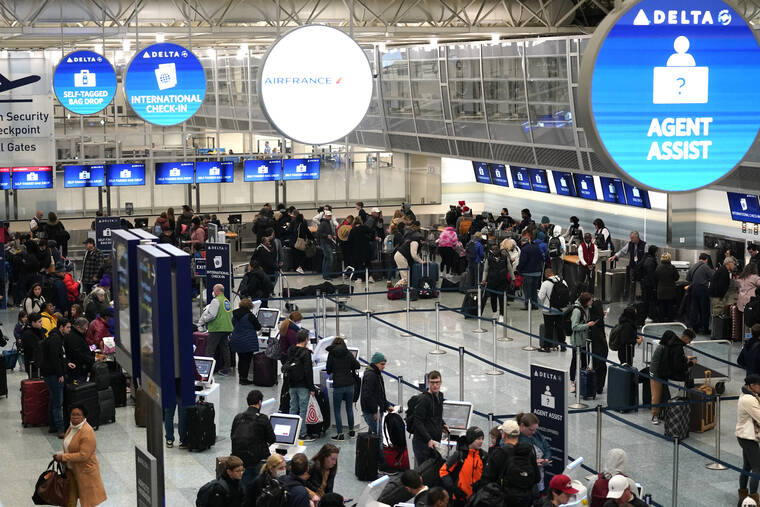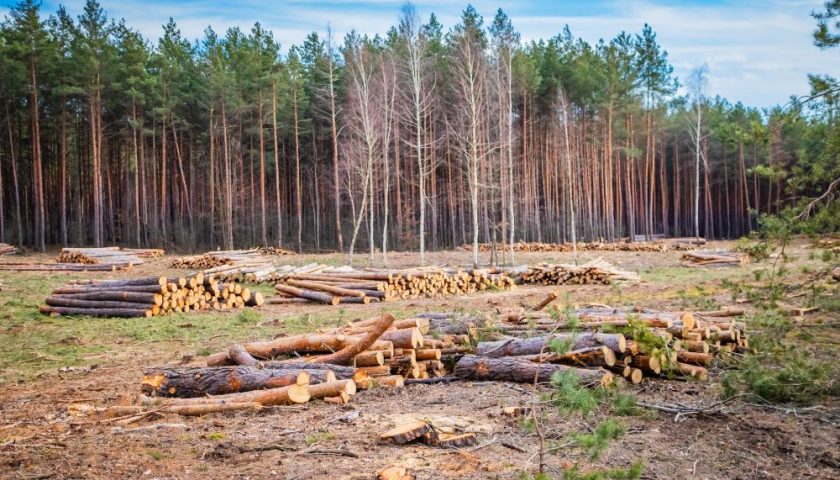Concerns about illness or inflation aren’t stopping Americans from hitting the roads and airports this holiday season. But a massive winter storm might.
Forecasters predict an onslaught of heavy snow, ice, flooding and powerful winds from Thursday to Saturday in a broad swath of the country, from the Plains and Midwest to the East Coast. A surge of Arctic air will follow. The Christmas weekend could be the coldest in decades.
The National Weather Service said today that the storm was so large and encompassing that around 190 million people are currently under some type of winter weather advisory.
The Federal Aviation Administration said flight delays due to snow and wind gusts were possible in Minneapolis today. High winds could also delay flights in Chicago and Denver.
Delta, American, United, Frontier, Alaska, Southwest and other airlines were waiving change fees and offering travelers the option of choosing new flights to avoid the bad weather.
Airports said they would work hard to stay open. Chicago’s O’Hare and Midway airports said they have 350 pieces of equipment and 400,000 gallons of pavement de-icing fluid between them to keep runways and taxiways clear.
Bianca Thrasher-Starobin, a consultant and lobbyist in Atlanta, flew into New York this morning for an event and planned to fly out the same night.
“I’m trying to get out of this weather. I would have stayed longer but I just can’t take that chance,” she said as she raced through LaGuardia Airport.
Bus and train travelers were also bracing for cancellations and delays.
Greyhound canceled bus service on 25 routes for today and Thursday, including service from Las Vegas to Denver, Denver to St. Louis and Chicago to Minneapolis, Memphis and Nashville. And Amtrak has canceled train service from multiple locations, including Seattle, Chicago and New York, over the next several days.
The weather added uncertainty to what was expected to be a busy travel season. Earlier this month, AAA estimated that nearly 113 million people would travel 50 miles from home or more between Dec. 23 and Jan. 2. That’s 4% higher than last year, although still short of the record 119 million in 2019.
Most planned to travel by car. About 6% will travel by air, AAA said. Either way, many travelers found themselves hastily changing their itineraries.
Joel Lustre originally planned to drive from Bloomington, Indiana, to McGregor, Iowa, on Thursday. But he shifted his work schedule, and his wife canceled an appointment so they could leave today and beat the storm.
In Montana, several ski areas announced closures today and Thursday due to the extremely cold temperatures and sustained winds. Others scaled back offerings. Schools were also closed due to the cold.
Authorities across the country are worried about the potential for power outages and warned people to take precautions to protect the elderly, the homeless and livestock — and, if possible, to postpone travel.
“If you don’t have to be out driving, especially on Friday, we ask that you don’t be out there,” said Ron Brundidge, Detroit’s public works director. Brundidge said 50 trucks will be out salting major roads on around-the-clock shifts once expected rain turns to snow on Friday.
Kelli Larkin arrived today from Florida for a holiday trip to New York. She plans to fly back Saturday night but said she’ll watch the forecast and change her return flight if she has to.
“It’s a little concerning,” she said. “We’ve got to play it by ear.”
Kurt Ebenhoch, a consumer travel advocate and former airline executive, said fee waivers give airline passengers valuable time ahead of a storm to figure out alternate days and routes. But consumers should read the fine print carefully. Airlines might charge the difference in fares if passengers book beyond a certain window, for example.
Ebenhoch stressed that passengers have the right to ask the airline to book them on a different airline’s flight if there are no options that meet their needs. And if the airline cancels the flight, consumers have the right to a full refund, not just credits for future travel.
The urge to travel and visit family and friends over the holidays appeared to outweigh concerns about illness. The Centers for Disease Control and Prevention said coronavirus cases and deaths have increased in recent weeks, and the trio of COVID-19, seasonal flu and respiratory syncytial virus, known as RSV, continues to stress the health care system.
Inflation also didn’t seem to be cutting into holiday travel demand. The average round-trip airfare rose 22% to $397 in the second quarter of this year — the most recent period available — according to U.S. government data. That was higher than overall U.S. price inflation, which peaked at 9% in June.
Lindsey Roeschke, a travel and hospitality analyst with Morning Consult, a market research company, said travelers appear to be cutting back in other ways.
In a recent survey, Morning Consult found that 28% of U.S. travelers were planning a one-day trip for the holidays, up from 14% last year. There was also an uptick in the number of people planning to stay with friends or family instead of at hotels. Roeschke thinks higher prices were a factor.
Associated Press Photographer Julie Nikhinson in New York and Associated Press Writers Corey Williams in Detroit, Julie Walker in New York, Amy Hanson in Helena, Montana, and Amancai Biraben in Los Angeles contributed.





